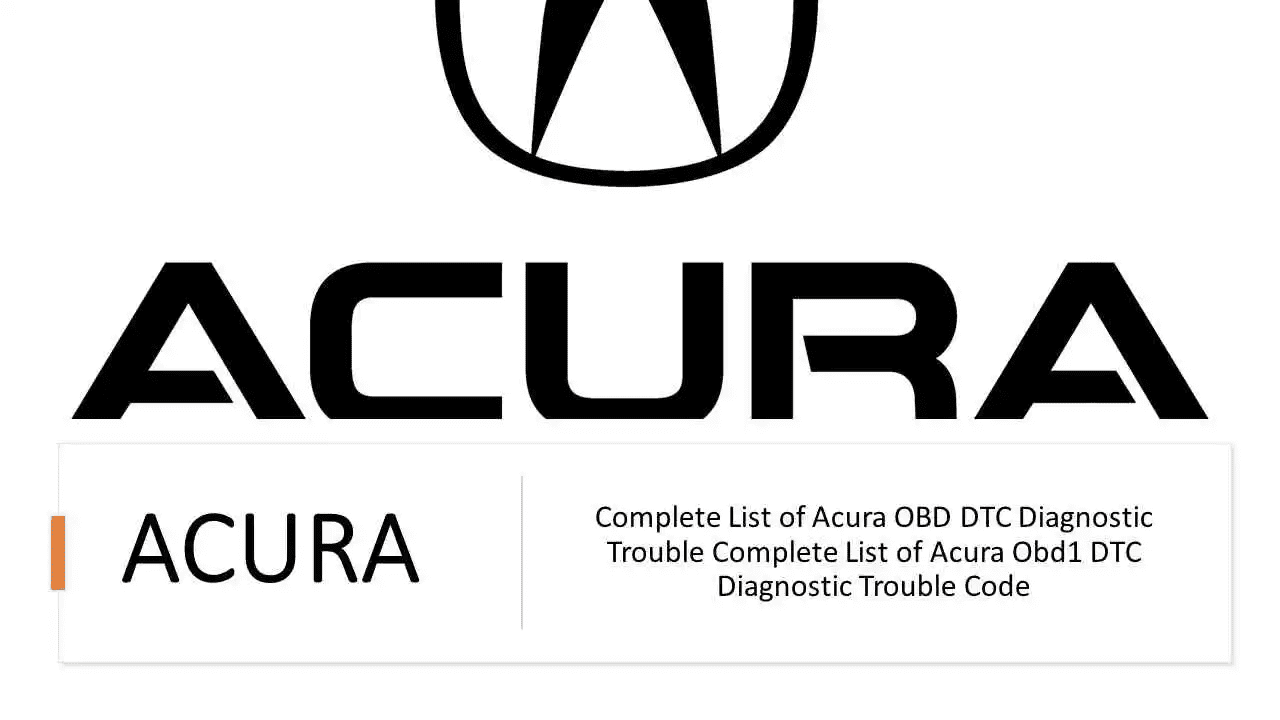If you’re having trouble with your Acura MDX, our OBD-II fault code list can be a useful resource. Our list provides a comprehensive collection of diagnostic trouble codes (DTCs) for the Acura MDX, along with explanations of each code and troubleshooting tips.
By using our OBD-II Trouble Codes List, you can identify the specific DTC associated with your problem and gain a better understanding of what is causing the issue. Our troubleshooting tips can also help you diagnose and repair the problem more effectively.
2001 ENGINE PERFORMANCE Acura Self Diagnostics.
If the BASIC DIAGNOSTIC PROCEDURES did not reveal any faults, continue with the self-diagnostics. If there are no fault codes or only pass codes after entering the self-diagnostics, proceed to the TROUBLE SHOOTING – NO CODES article for diagnosis by symptom (i.e., rough idle, misfiring, etc.).
SELF DIAGNOSTIC SYSTEM
NOTE:
The Powertrain Control Module (PCM) may be referred to as the Engine Control Unit (ECU).
WARNING:
During self-diagnosis only the specified ECU (PCM) fuse should be checked. ECU (PCM) fuse No. 6 (15A) is located in the underbody fuse/relay box.
SELF DIAGNOSTIC SYSTEM
NOTE:
The Powertrain Control Module (PCM) may be referred to as the Engine Control Unit (ECU).
WARNING:
During self-diagnosis only the specified ECU (PCM) fuse should be checked. ECU (PCM) fuse No. 6 (15A) is located in the underfloor fuse/relay box.
MALFUNCTION INDICATOR LIGHT (MIL)
The malfunction indicator light (MIL) illuminates as a bulb check whenever the ignition is switched on and the engine is not running. The MIL also illuminates when a system fault is detected and an appropriate fault code is set in the PCM’s memory.
Hard faults
Major faults cause the MIl to illuminate and remain on until the problem is rectified. If the light illuminates and remains on (light may flash) while the vehicle is being driven, determine the cause of the malfunction by following the appropriate code retrieval procedures. If a sensor fails, the PCM will use a substitute value in its calculations to continue engine operation. In this condition, known as limp-in mode, the car will run but driveability will be suboptimal.
Intermittent failures
Intermittent faults can cause the MIL to flicker or glow and then go out after the intermittent fault has been cleared. However, the corresponding fault code remains in the PCM memory. If the associated fault does not recur within a specified time, the associated fault code is cleared from the PCM’s memory. Intermittent faults can be caused by sensor, connection or wiring problems. Refer to INTERMITTENTS in the TROUBLE SHOOTING – NO CODES article.
As a bulb check, the Malfunction Indicator Light (MIL) will illuminate whenever the ignition is switched on and the engine is not running. The MIL also illuminates when a system fault is detected and an appropriate trouble code is set in the PCM memory.
Hard faults
Hard faults cause the malfunction indicator light to illuminate and remain illuminated until the problem is rectified. If the light illuminates and remains on (light may flash) while the vehicle is being driven, determine the cause of the malfunction by following the appropriate code retrieval procedures. If a sensor fails, the PCM will use a substitute value in its calculations to continue engine operation. In this condition, known as limp-in mode, the car will run but driveability will be suboptimal.
Intermittent failures
Intermittent faults can cause the MIL to flicker or glow and then go out after the intermittent fault has been cleared. However, the corresponding fault code remains in the PCM memory. If the associated fault does not recur within a specified time, the associated fault code is cleared from the PCM’s memory. Intermittent faults can be caused by sensor, connection or wiring problems.
